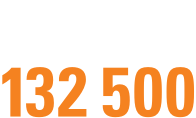Aftershocks to continue following Sunday’s earthquake
Aftershocks to continue following Sunday’s earthquake
A 5.0 magnitude earthquake at a depth of 7km was recorded with an epicentre near Colac, at 2:11am on Sunday morning, 22 October. Since then, over 8,400 'felt reports' have been registered with Geoscience Australia.
An aftershock was then recorded at 5:44am, measuring 3.6 in magnitude at a depth of 10km - with an epicentre near Apollo Bay - which was followed by a number of further aftershocks.
Subsequently, a small number of people phoned VICSES on 132 500 for emergency assistance, mainly for minor building damage.
VICSES received two Requests for Assistance (RFAs) following the earthquake of 22 October and resulting aftershocks. However, the agency has already received 40 RFAs resulting from earthquake activity since the beginning of July this year.
Furthermore, VICSES has seen an overall rise in calls for help resulting from earthquake activity, over the last five years:
|
Financial Year (FY) |
RFAs |
|
2018/19 |
9 |
|
2019/20 |
10 |
|
2020/21 |
12 |
|
2021/22 |
163 |
|
2022/23 |
17 |
|
2023/24 |
40 |
In Victoria’s history, there have only ever been five earthquakes recorded with a magnitude of 5.0 or above on the Richter scale, including a 5.9 magnitude earthquake with an epicentre in Mansfield that also shook Melbourne on 22 June 2021.
Earthquakes can and do happen in Victoria, and they occur due to the buildup of stress in rocks along fault planes throughout the region.
What is a fault plane?
A fault plane is a weak point within a tectonic plate where the pressure can be released. There are a number of fault planes that have been identified in Victoria, including in the Strzelecki Ranges, the Mornington Peninsula, and in the Otway Ranges.
As earthquakes cannot be predicted, it’s important to be prepared and know what to do if an earthquake happens in your area.
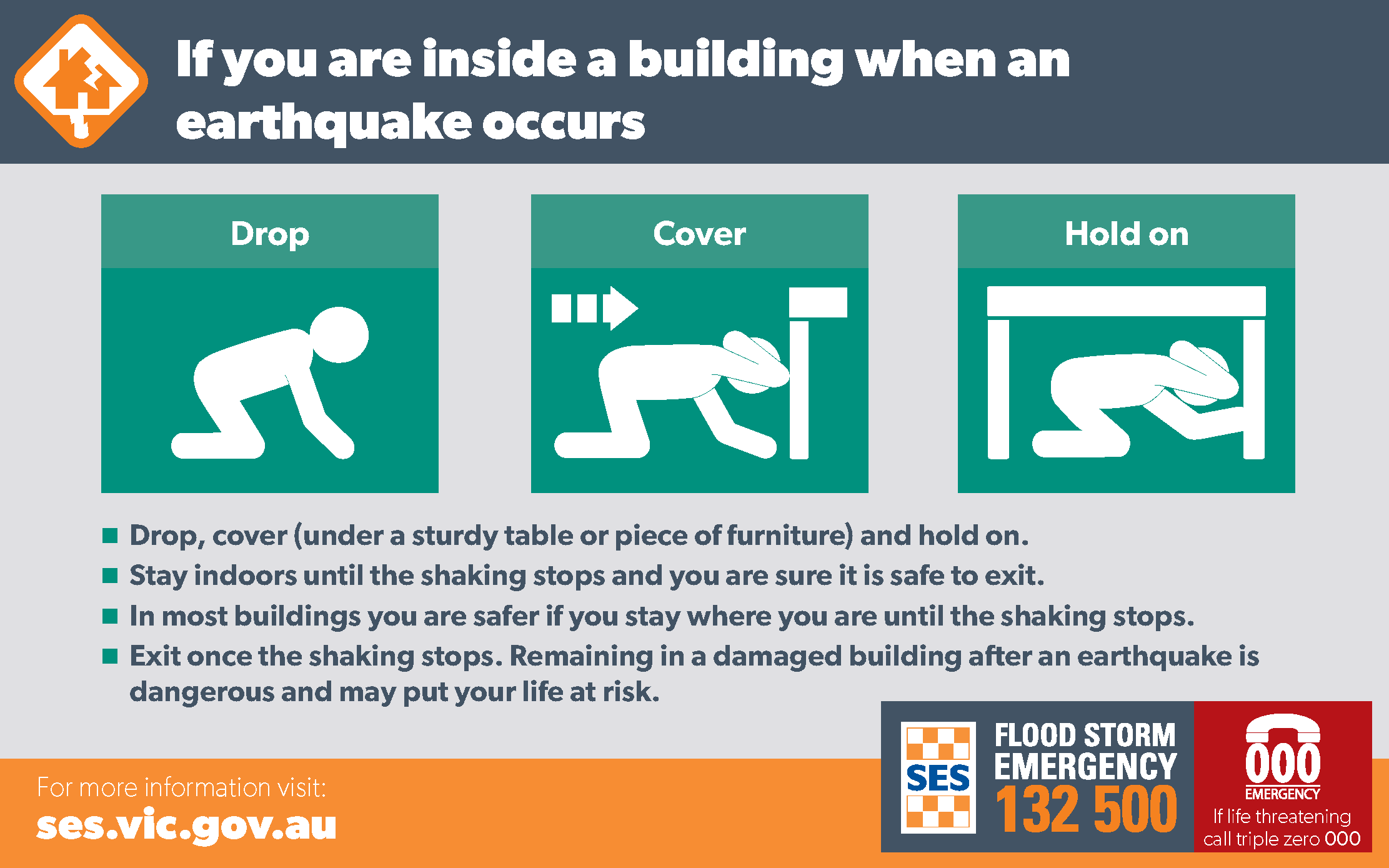
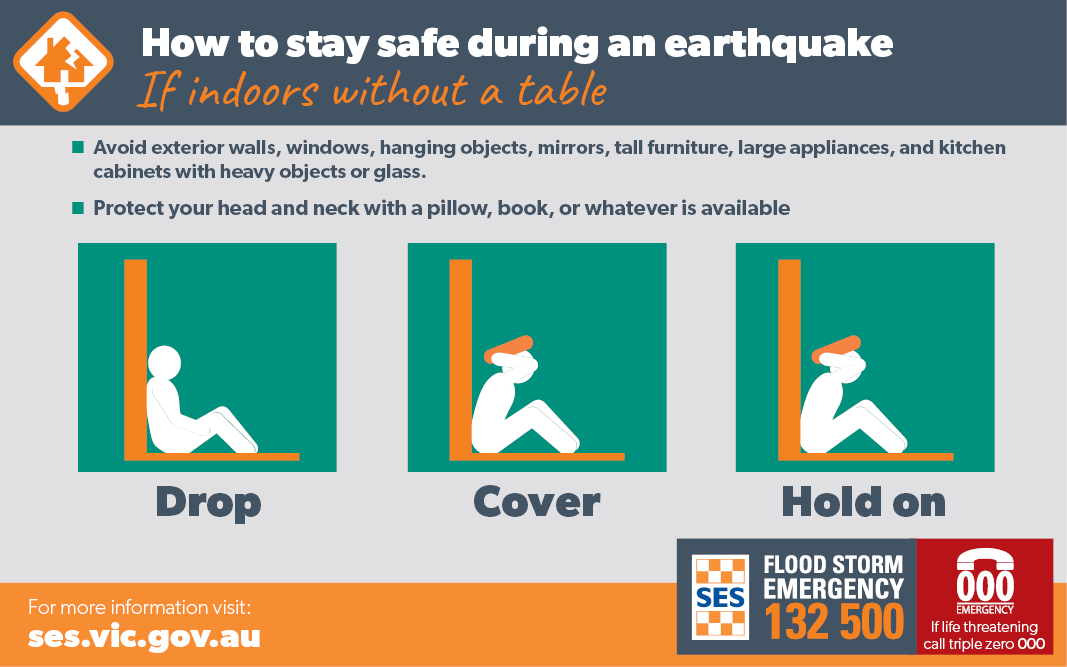
If you are indoors during an earthquake:
- 'Drop, cover and hold-on’
- This mean that you should drop to the ground; take cover by getting under a sturdy table or other piece of furniture; and, hold on until the shaking stops.
If you are outdoors during an earthquake:
- Move away from buildings, streetlights, and power lines
- Once in the open, stay there until the shaking stops
- The greatest danger exists directly outside buildings, at exits and alongside exterior walls.
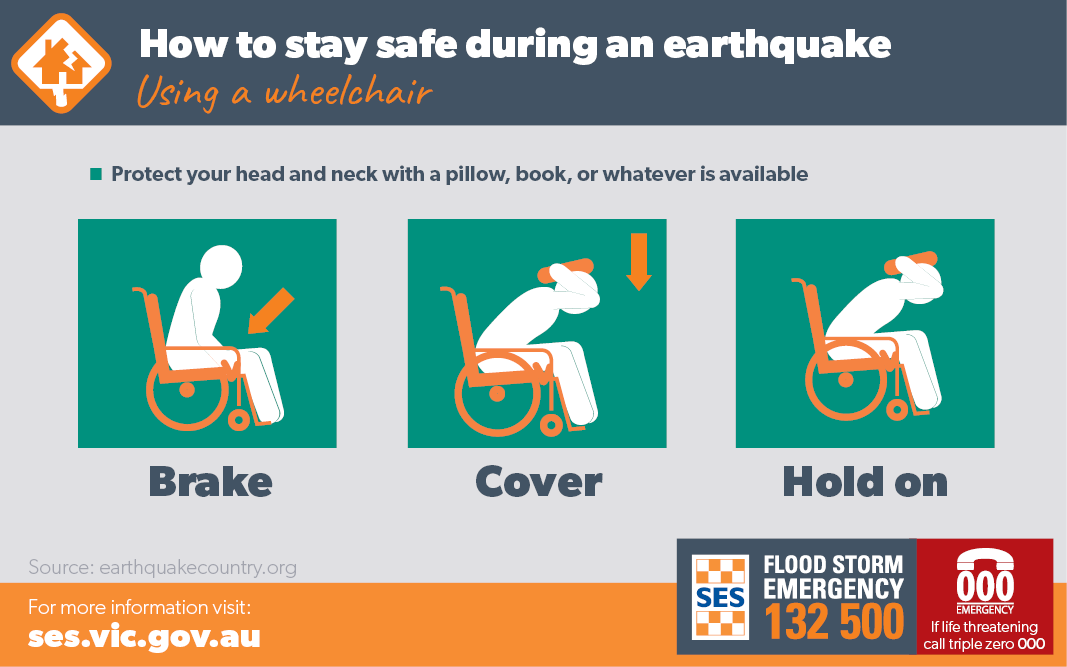
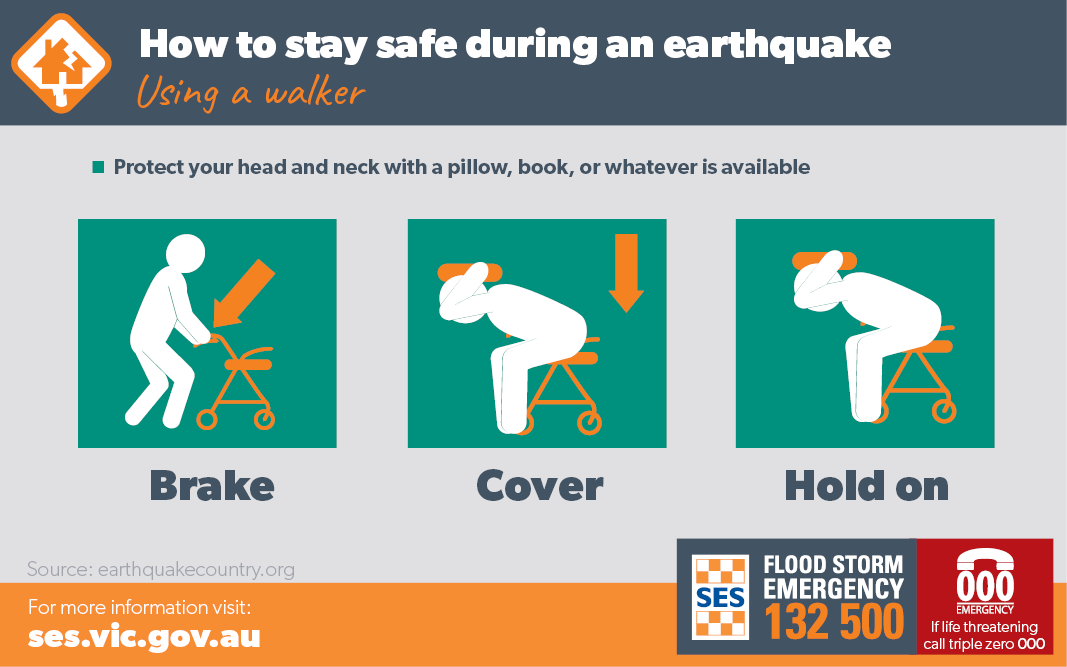
If you are using a wheelchair or walking frame:
- Lock and brake your wheelchair
- Cover your head and neck with a pillow, book, or whatever is available
- Hold on.
After an earthquake:
- Expect aftershocks
- Keep your radio tuned to your emergency broadcaster and follow instructions by emergency services
- Stay informed via the VicEmegency App, website or hotline (1800 226 226)
- Watch for hazards and check for injuries or damage
- Turn off electricity, gas and water
- Avoid driving, unless for emergencies.
After an earthquake, if you require emergency assistance, call VICSES at 132500 or for life-threatening emergencies call Triple 0 (000). For information about the earthquake, call Geoscience Australia at 1800 655 739. You can report an earthquake to Geoscience Australia at www.ga.gov.au/earthquake.
Yep. We felt it too. More information coming shortly #earthquake
— VICSES News (@vicsesnews) May 28, 2023
Victorians are reminded to never rely on one channel for emergency information. Connect to official sources of emergency information, including the VicEmergency app and www.emergency.vic.gov.au.


